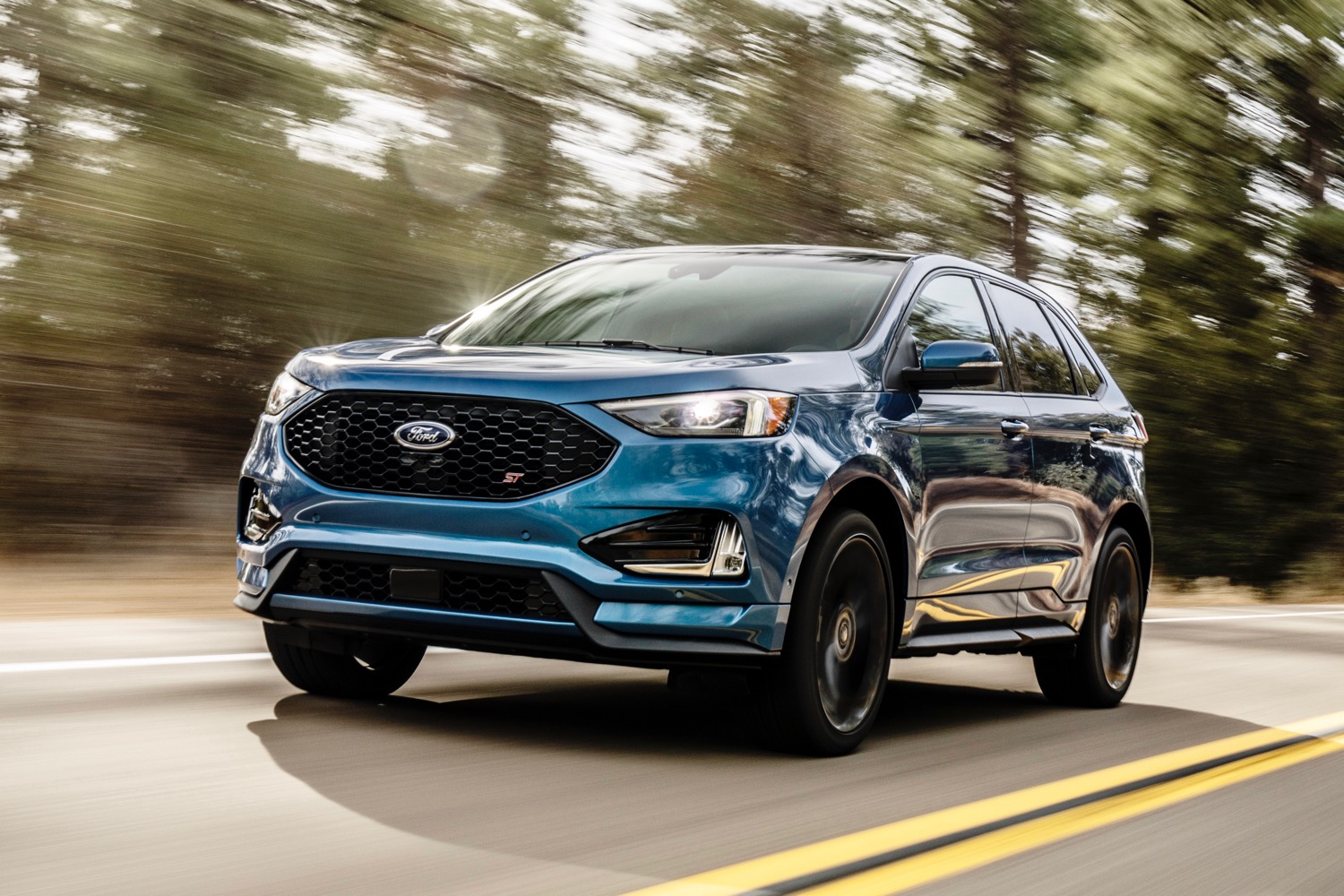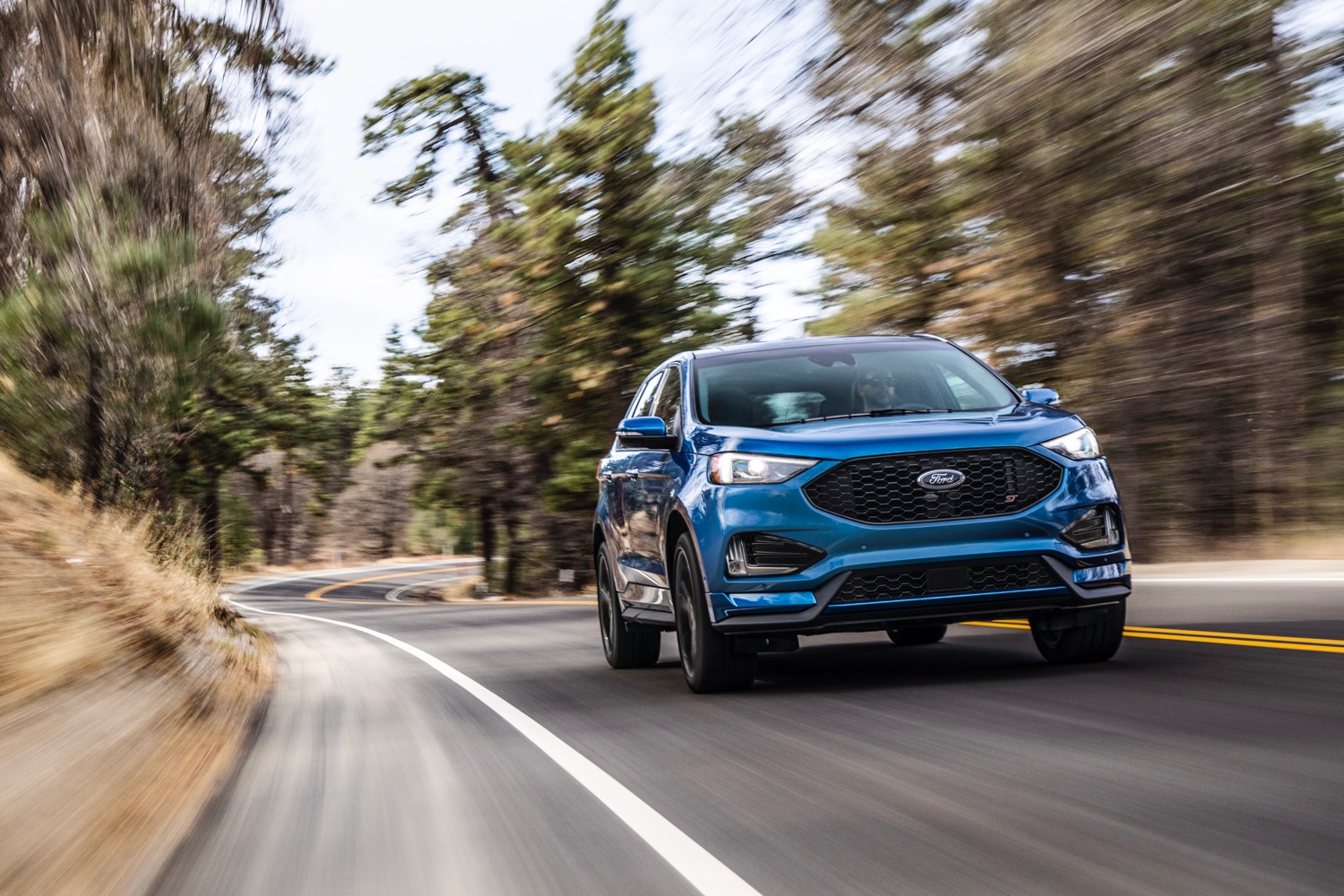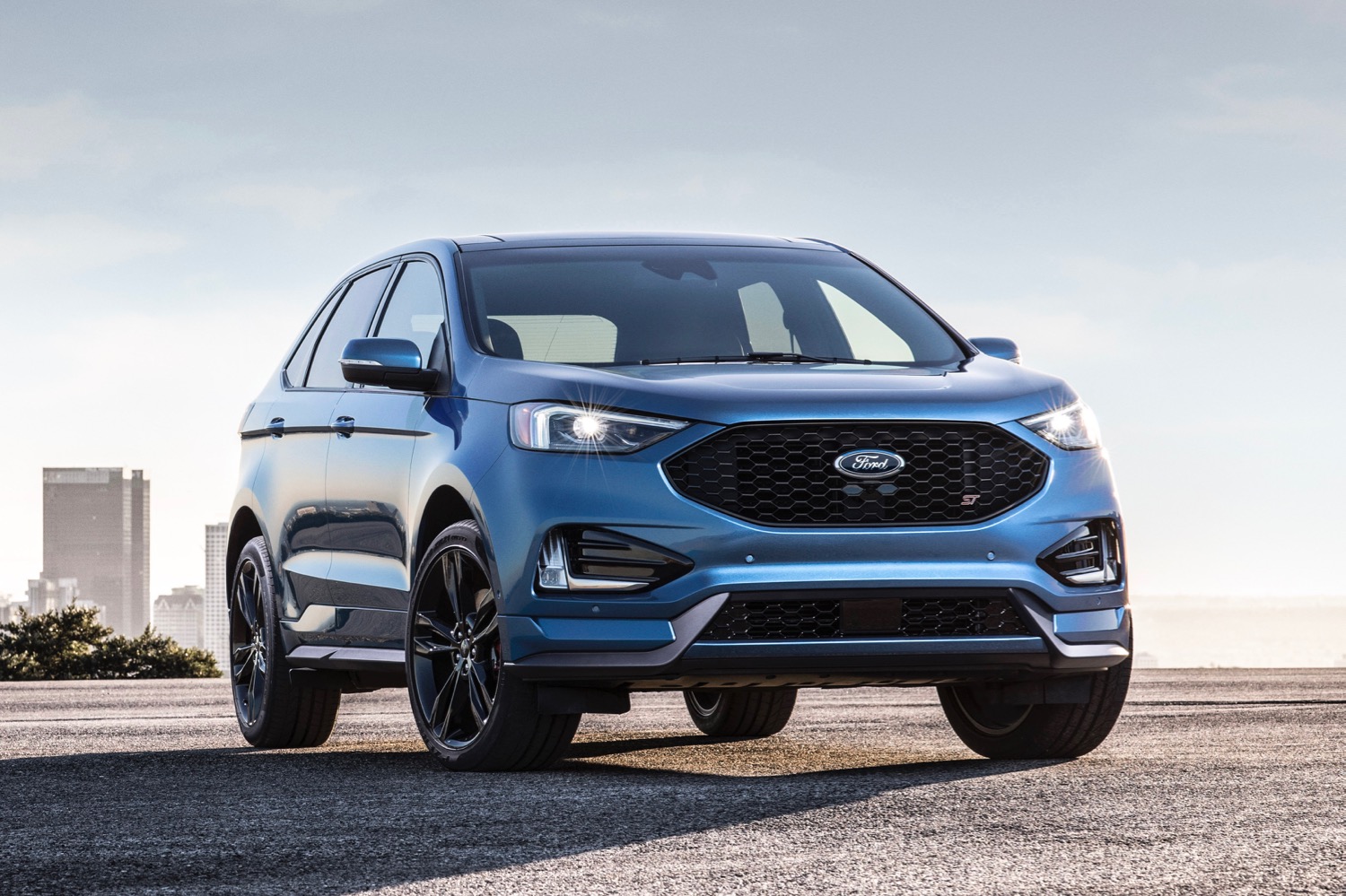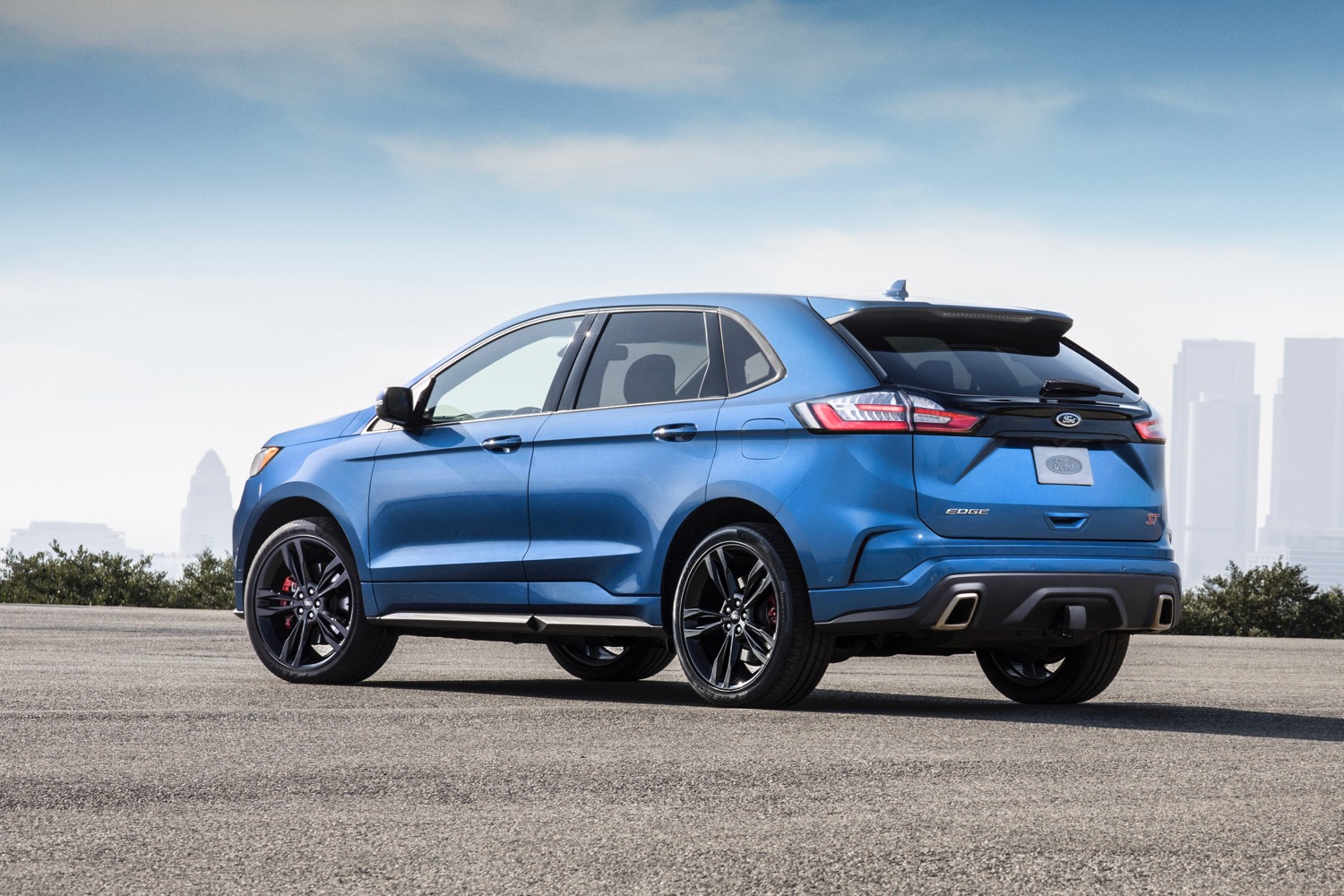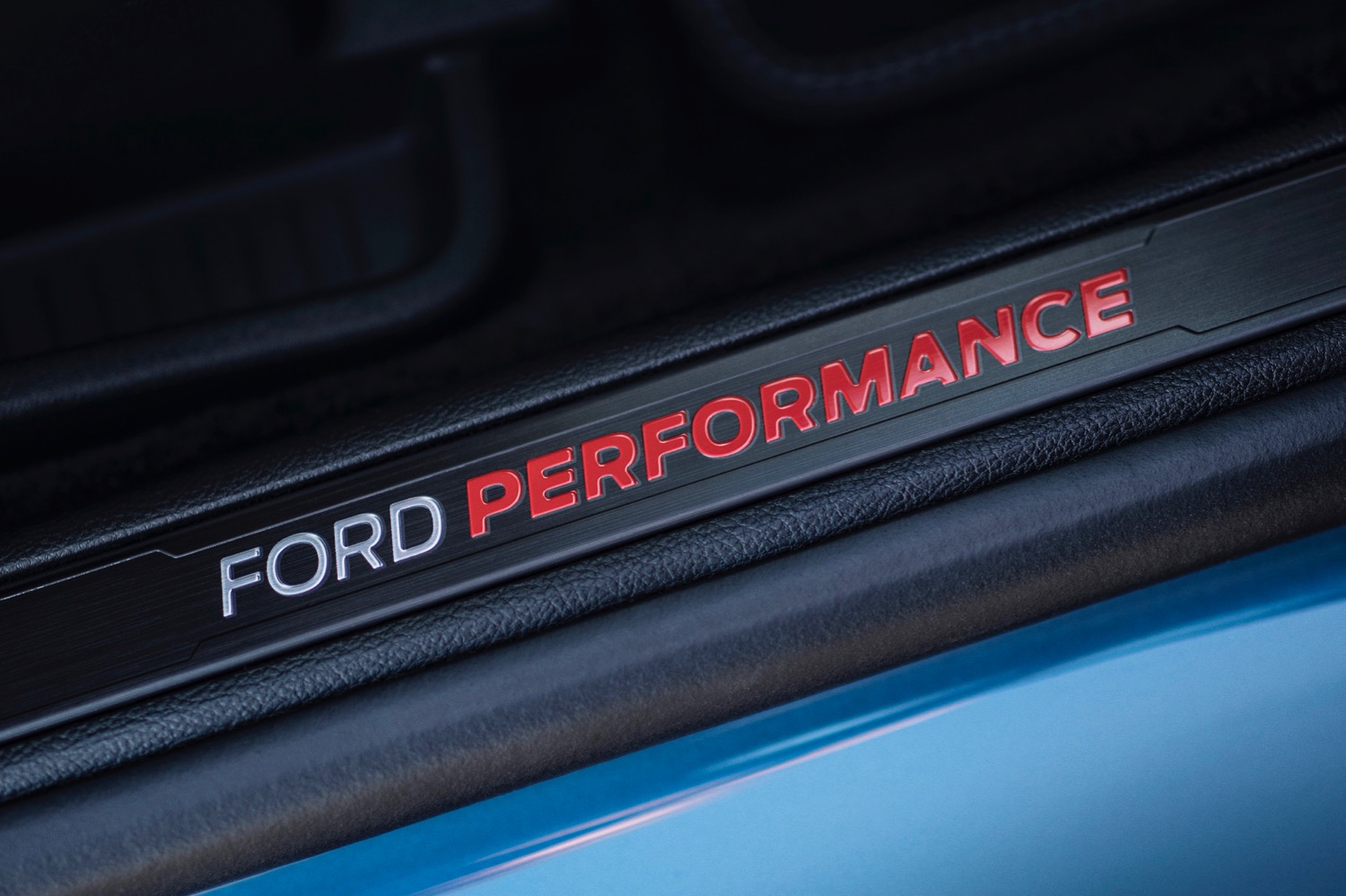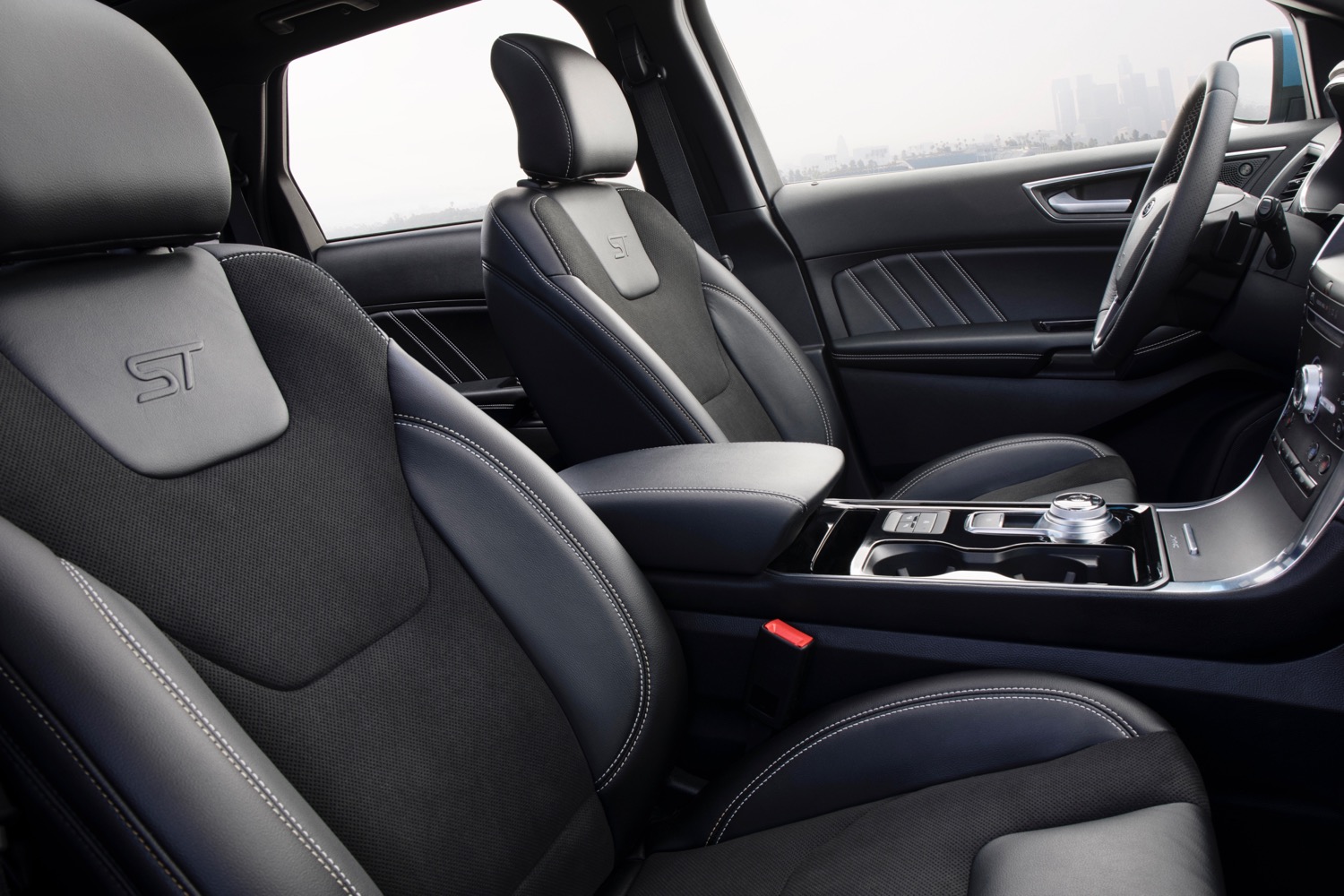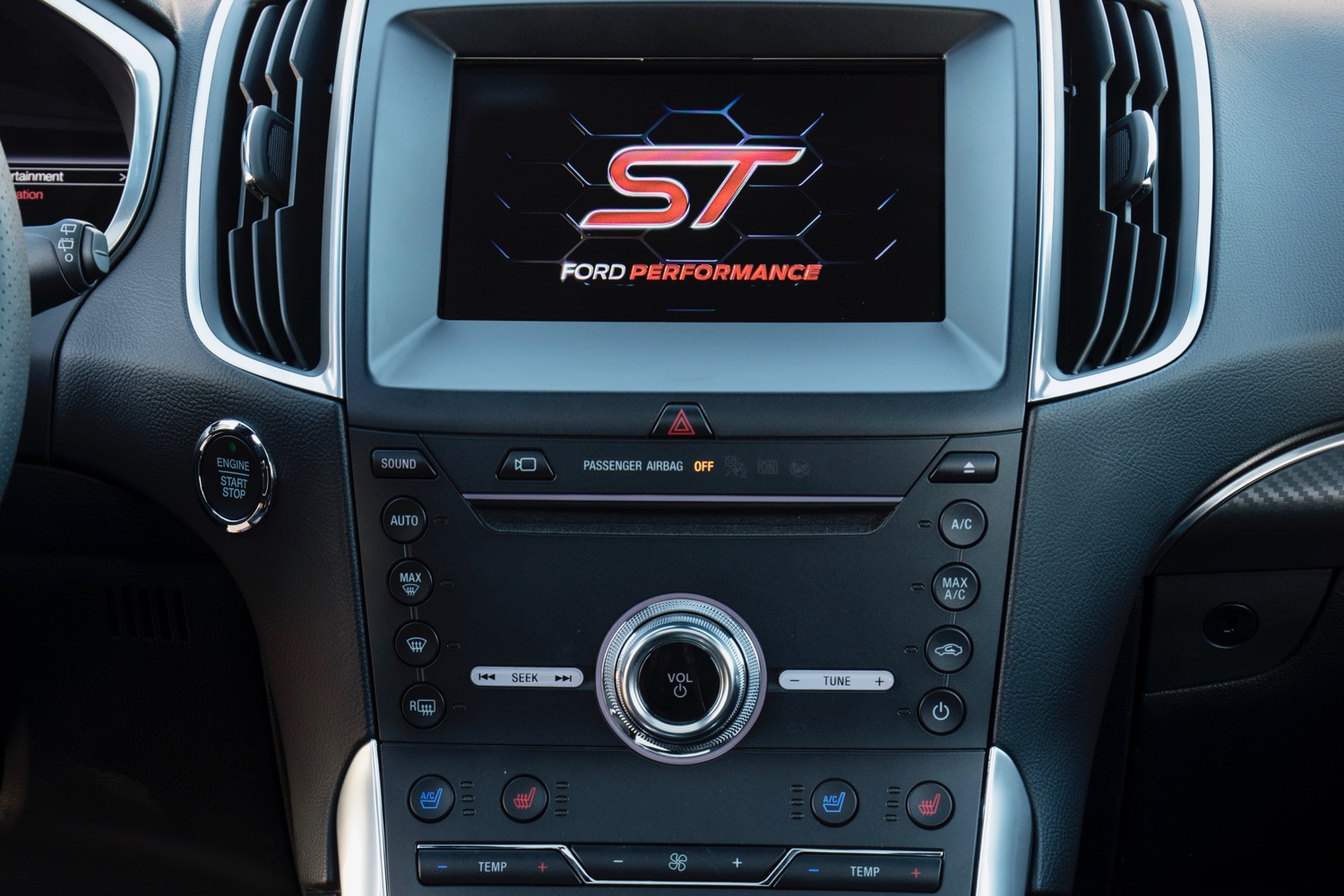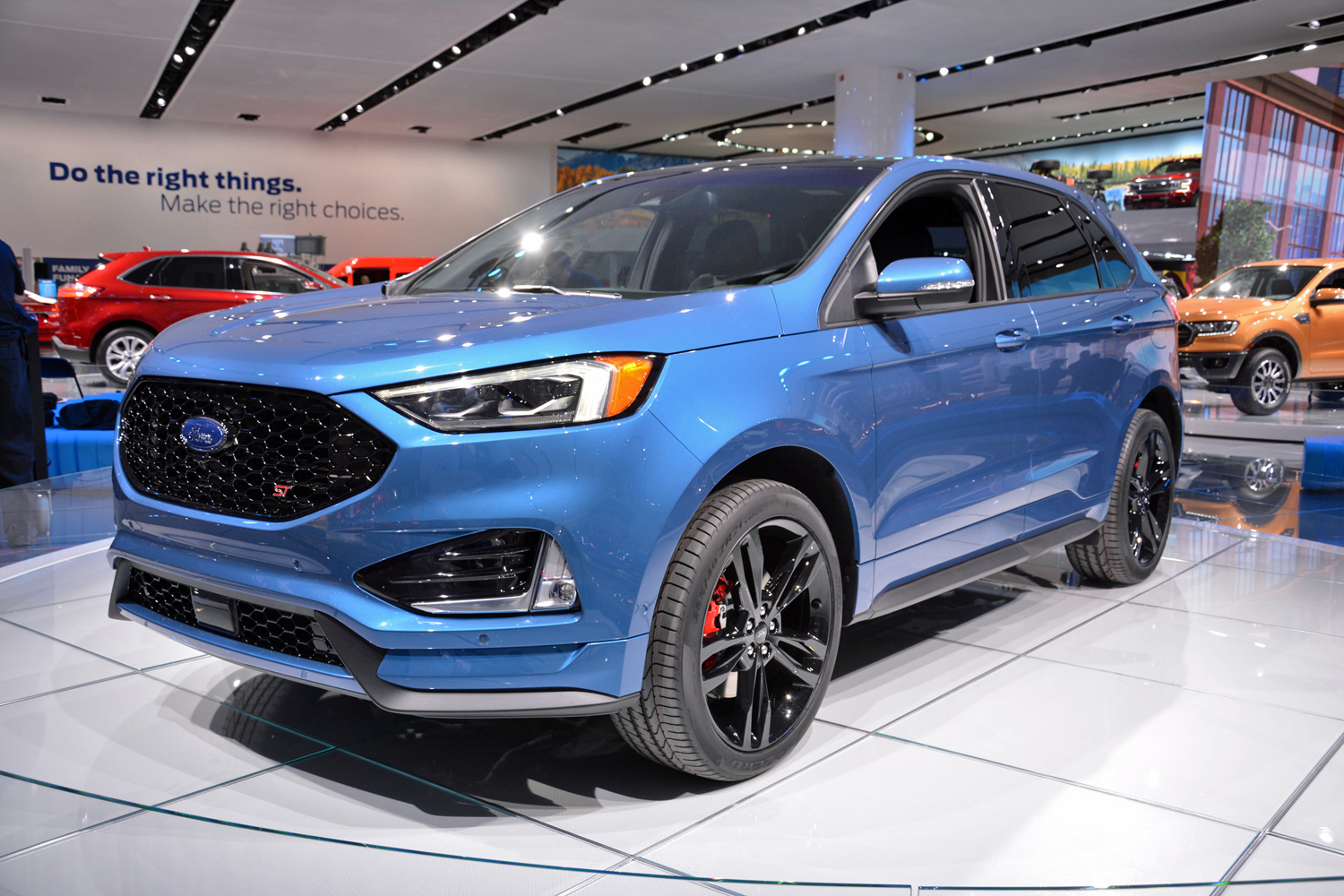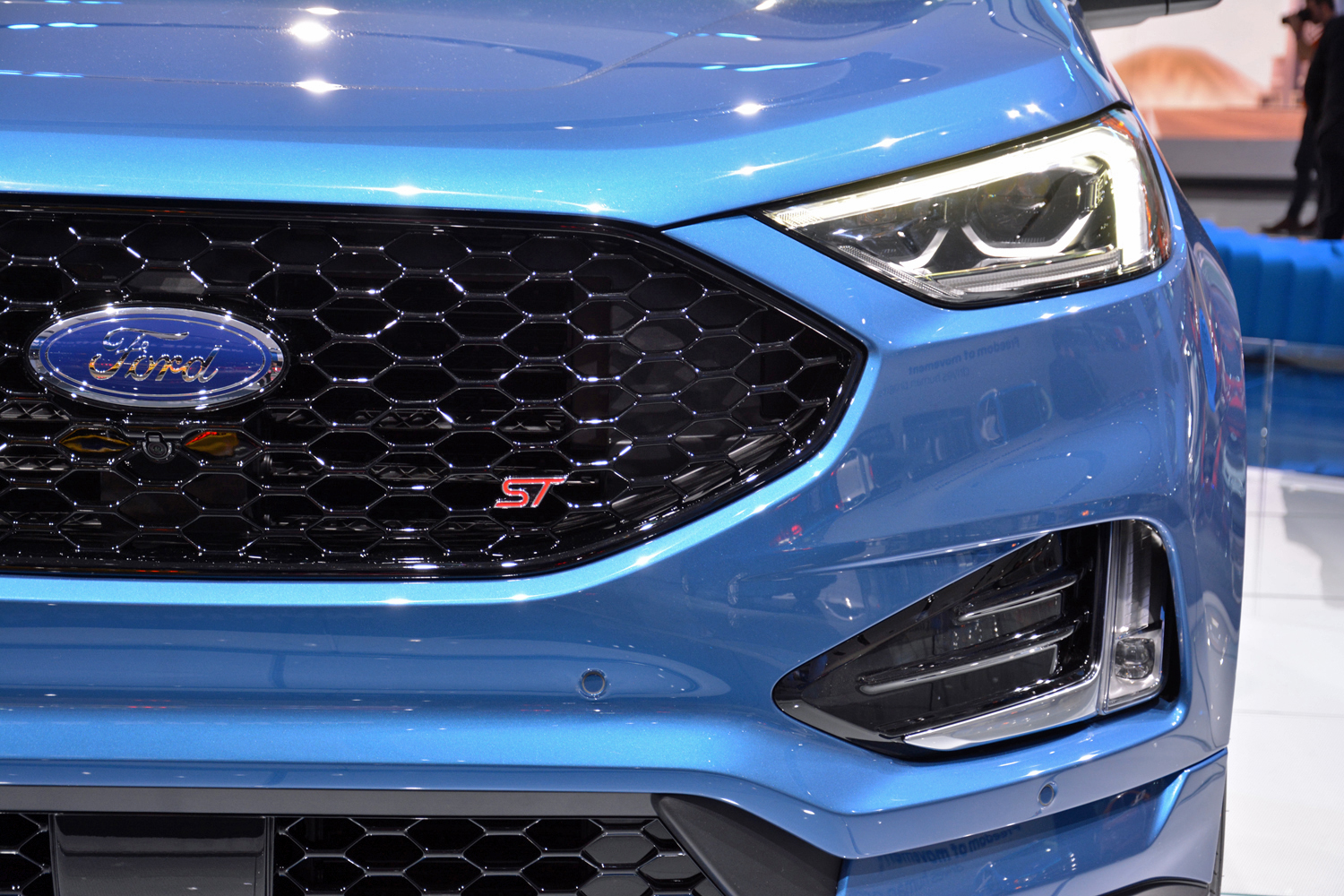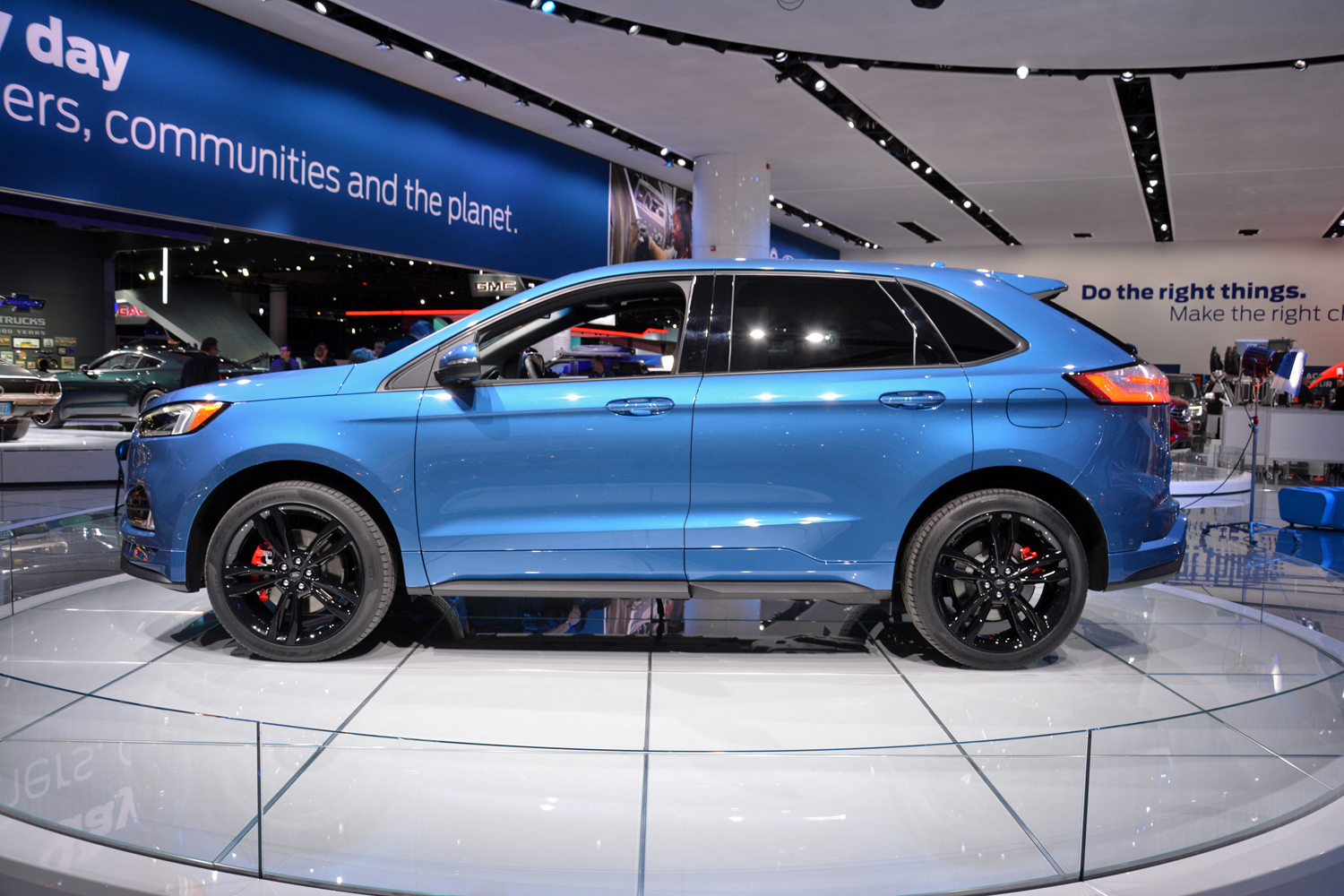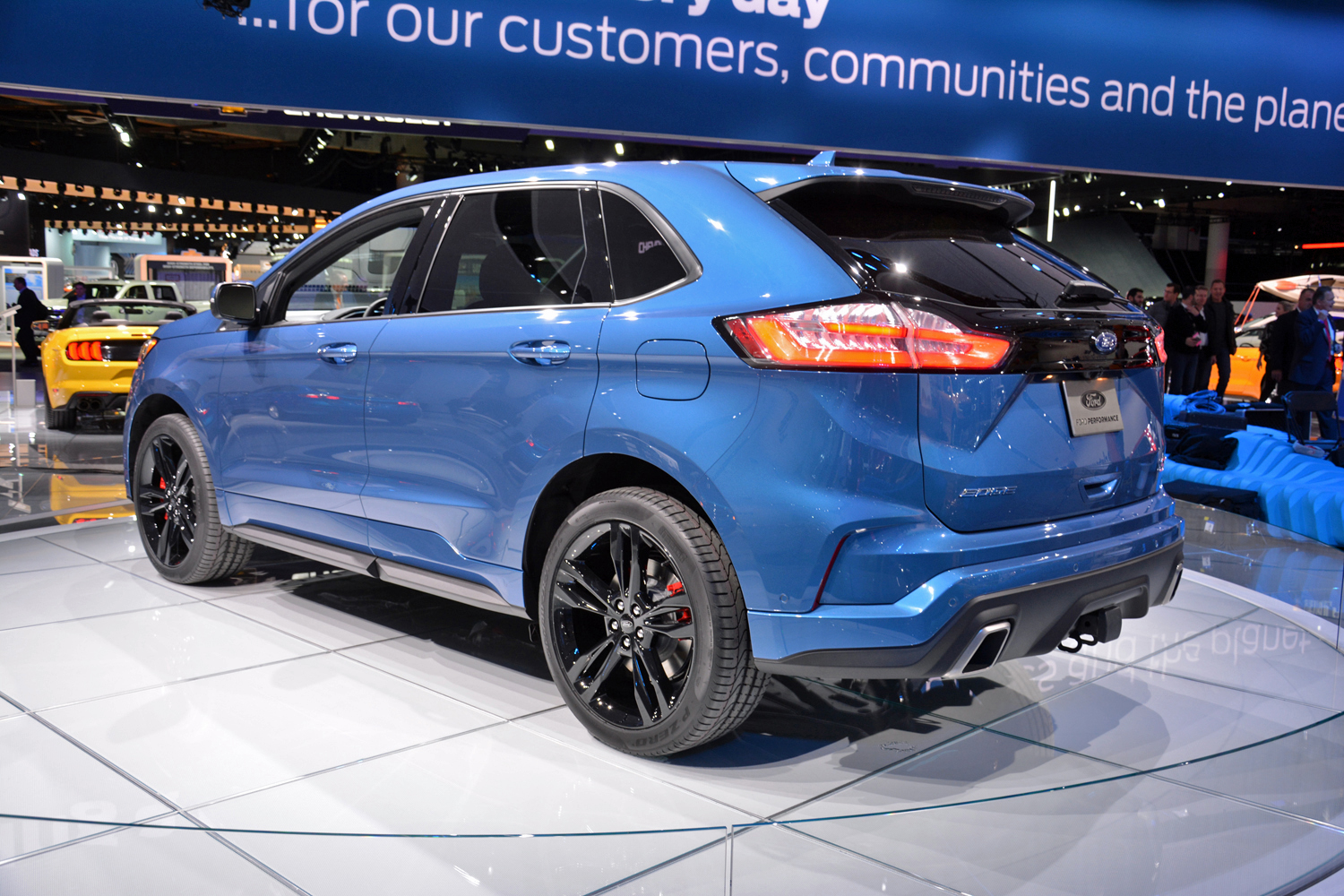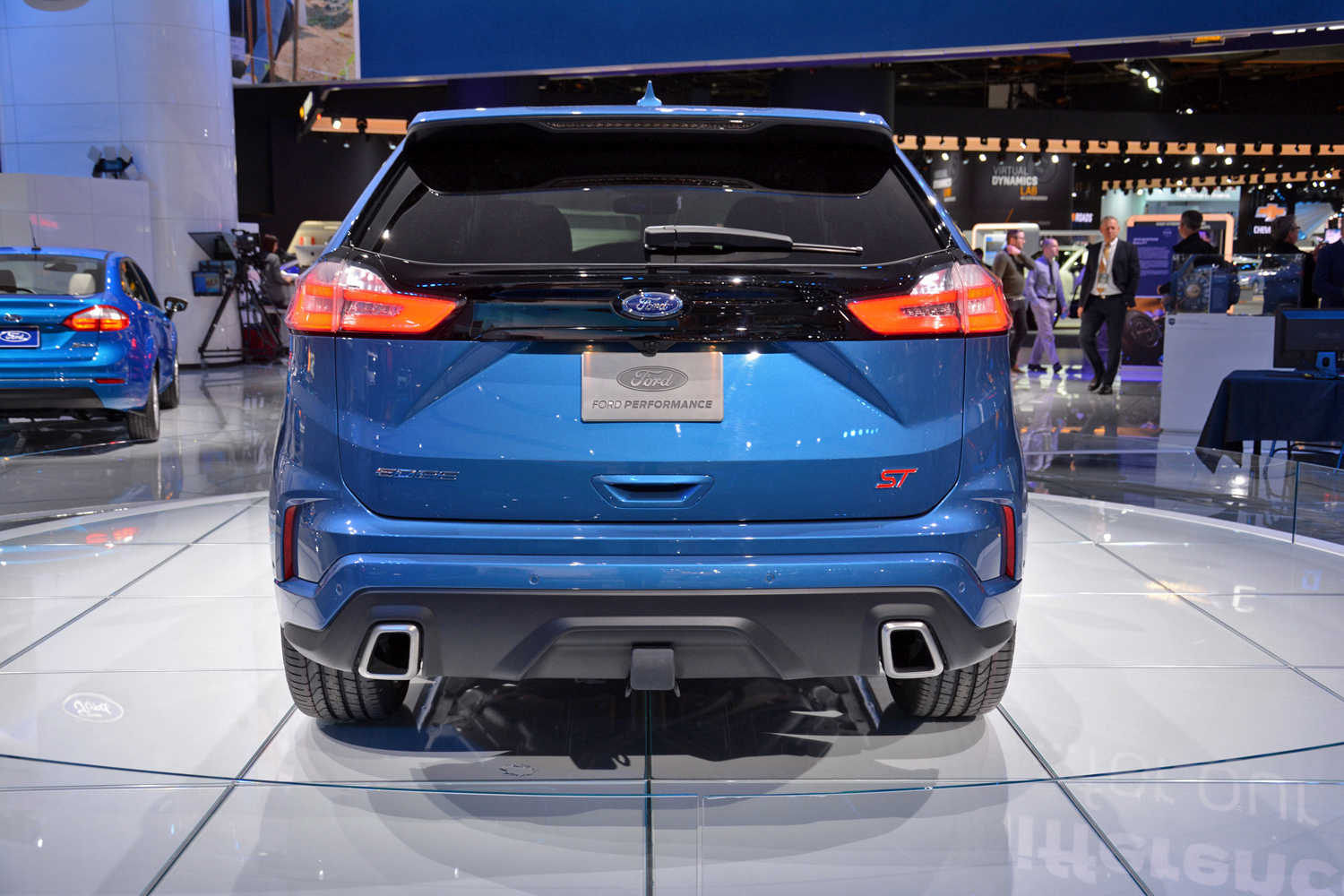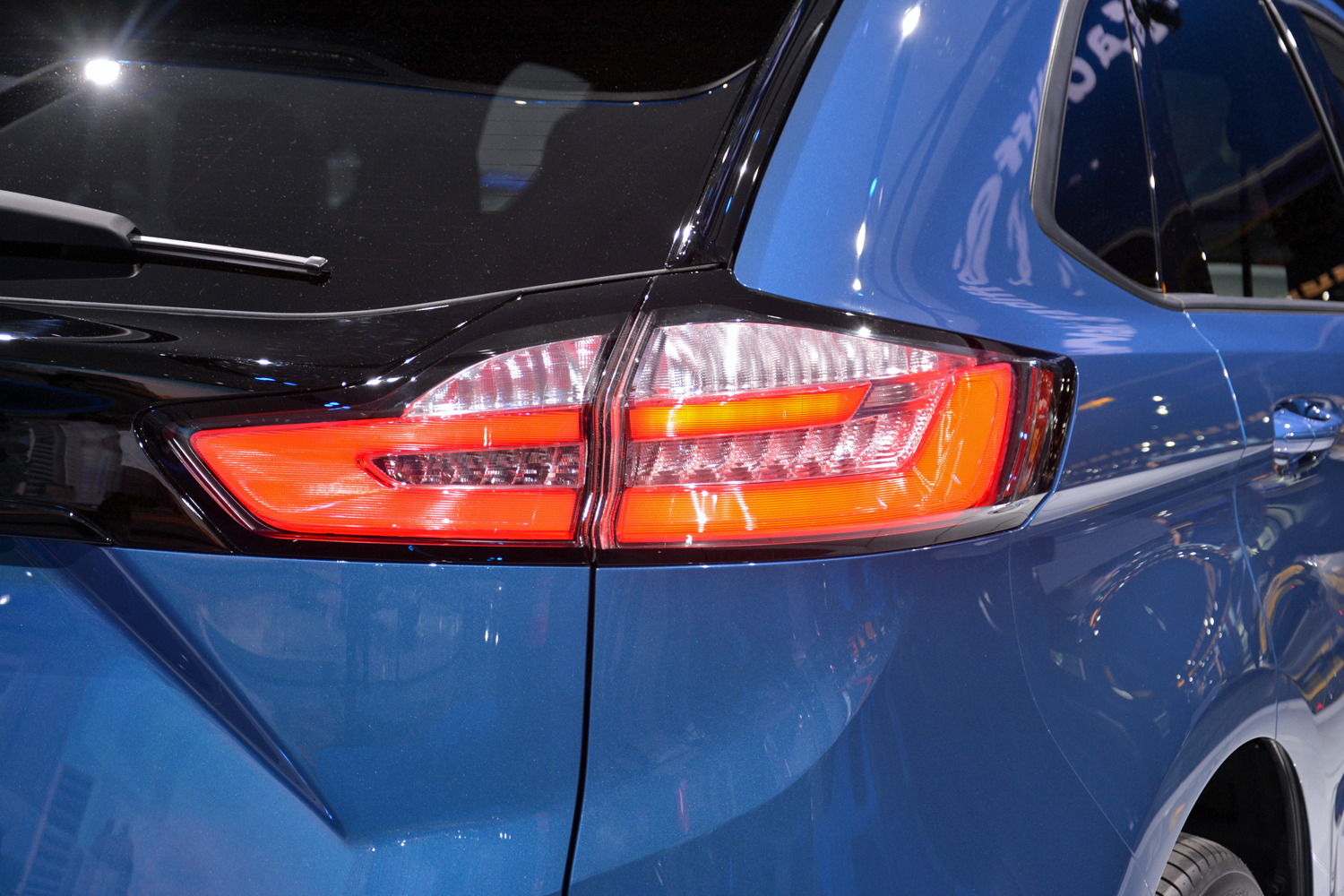Ford may have just built the ultimate soccer-mom hot rod. The 2019 Ford Edge ST is the first crossover to wear Ford’s ST performance badge, previously seen on the Focus ST and Fiesta ST hot hatchbacks. But is Ford diluting the ST badge by slapping it on a utility vehicle?
The Edge ST has the same 2.7-liter twin-turbocharged EcoBoost V6 used in the previous Edge Sport, as well as the Fusion Sport sedan. But the V6 makes 335 horsepower and 380 pound-feet of torque in the ST, compared to 315 hp and 350 lb-ft in the Edge Sport. An eight-speed automatic transmission and all-wheel drive are mandatory. The ST also features model-specific suspension tuning, along with an optional performance brake package.
Ford won’t disclose any performance figures, so we can’t say for sure whether the Edge ST will offer a driving experience worthy of its high-octane badge. But given that performance is usually a low priority with family crossovers like the Edge, it’s not like the ST will have much direct competition.
Like many modern vehicles, the Edge ST includes a Sport mode that alters different vehicle parameters to liven up the driving experience. In the case of the Edge ST, Sport mode sharpens up throttle response, reconfigures the digital instrument cluster to show a tachometer, and pipes sporty engine noises into the cabin. It also changes the behavior of the transmission, allowing for more aggressive shifts in automatic mode, but also letting the driver use paddle shifters for manual gear selection. A rev-matching function helps smooth out shifts.
Ford also did a decent job of making the ST look sporty, and that may be all that matters to some owners. Ford fitted it with a wider, darker mesh grille, side skirts, bigger exhaust outlets, and model-specific 21-inch wheels. The Edge itself still looks like a Ford Taurus suffering from a bad allergic reaction, though.
Besides the addition of the ST model to the lineup, the Edge sports a few other notable changes for 2019. New safety features include adaptive cruise control with stop-and-go and lane-centering assist, a post-collision braking system that automatically applies the brakes to keep the car from rolling after a crash, and evasive steering assist, which provides “steering input” to help the driver maneuver around slow or stopped vehicles, Ford says.
All Edge models also come standard with a built-in Wi-Fi hot spot that can support up to 10 devices, and Ford’s Sync AppLink app suite, which includes an Amazon Alexa app. The base 2.0-liter, turbocharged four-cylinder engine gets a 5-hp bump (250 hp) and a new eight-speed automatic transmission.
The 2019 Ford Edge hits showrooms this summer. Pricing for the ST and other Edge models will be disclosed closer to the launch date. The Edge ST’s unveiling at the 2018 Detroit Auto Show began what will be a wave of new Ford SUVs washing into showrooms over the next couple of years, including an ST version of the Explorer.
Update: Added details on the Edge ST’s Sport mode
Editors' Recommendations
- Ford unveils all-electric Mustang Mach-E
- 2019 Kia Niro EV electric car offers 239 miles of range for $39,495
